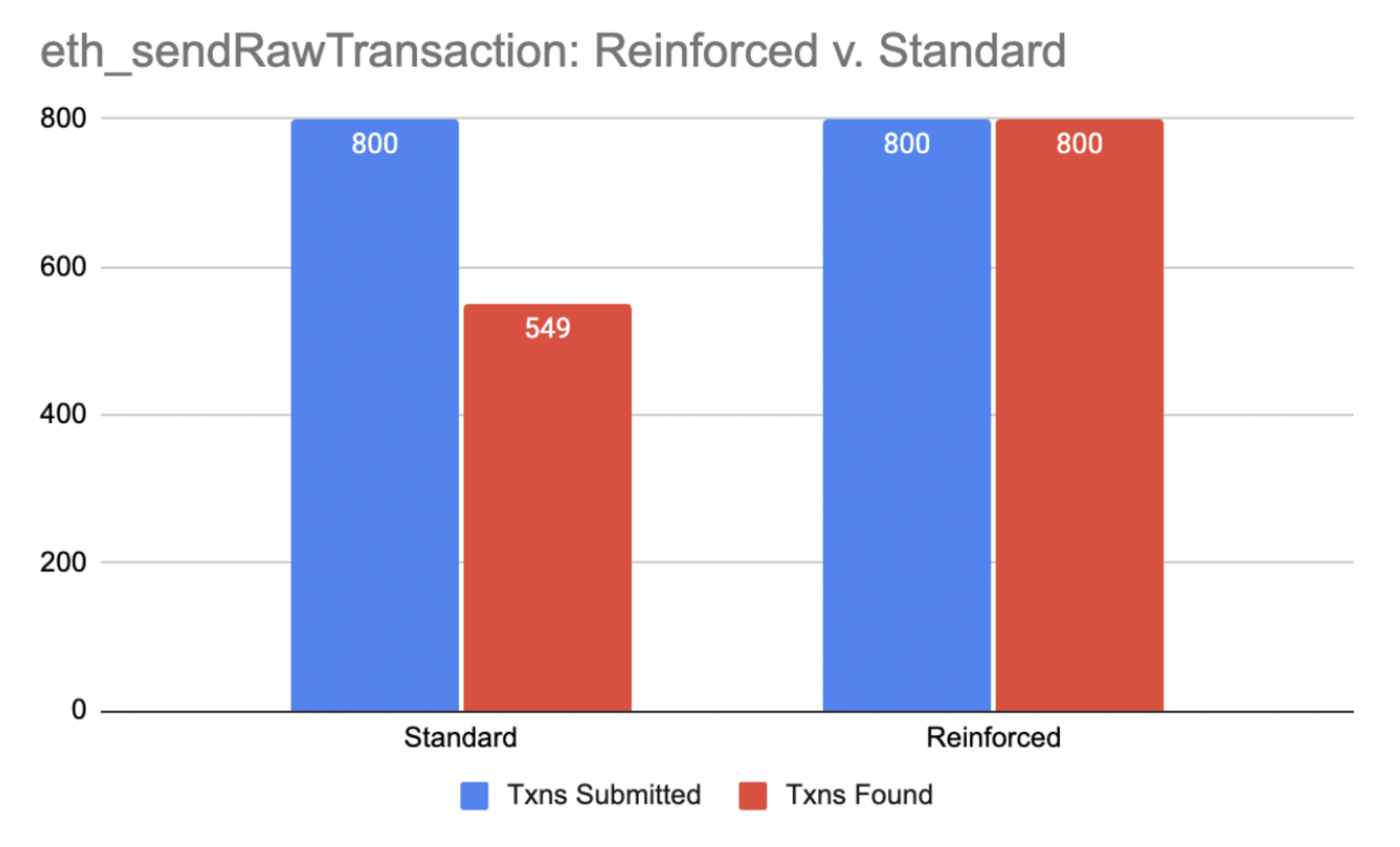Achieve 7.9x faster and 46% more reliable transactions by tapping into the reinforced transaction engine
Capitalize on your upside and protect your downside with Reinforced Transactions. With zero code changes, ensure your transactions get on-chain 7.9x faster, with 100% reliability. This document will explain how these processes work and how you can start accessing the benefits.
Get Started
Reinforced Transactions are available to Growth and Enterprise teams. Sign up for an account or upgrade to growth tier to get started.
- Existing growth or enterprise users can add Reinforced Transaction support to their apps by clicking "edit app" on their individual app page from the dashboard
- New users can add Reinforced Transaction support to their apps from within the app creation flow.
Background
When a transaction request is sent to a node, it can fail for a myriad of reasons:
- Volatile gas prices
- Network congestion leading to the lack of propagation to validators
- Variable mempool conditions leading to dropped transactions
- Much more...
Why does this matter?
When a transaction fails, it can mean you’re in really bad shape; some examples:
- In August, 2022, the single largest MEV transaction of all time occurred, with a gross profit of $3,319,854.98; reinforced transactions ensures you don’t miss that opportunity
- In April, 2021, the Bored Apes collection was minted; Apes today are valued at 424 ETH (or over $500k USD); reinforced transactions ensures you don’t miss that mint opportunity
- Slippage can happen between when you confirm a transaction and when said transaction confirms on the blockchain. There can be meaningful price changes in this time. On 10/20/22, if you were exchanging 100 ETH, you could get 20,392 UNI in exchange. But with 0.5% slippage (the default on Uniswap), you could lose $2,775 between slippage and gas fees.
How Reinforced Transactions can help
Benefits:
- 7.9x faster time to mine transaction
- 46% decrease in dropped transactions, resulting in a 100% mine rate

Benchmarked during high network congestion
How Reinforced Transactions work
Reinforced Transactions increase transaction speed and reliability by monitoring the lifecycle of a transaction and re-propagating transactions as necessary, particularly at moments of peak congestion or gas volatility.
This re-propagation helps give the transaction increased visibility within the network, by optimizing the paths from entry-points to block proposers, increasing both the speed and the reliability that the transaction will land on-chain. In the background, Alchemy will:
- Submit the transaction to a node
- Monitor to see if the transaction gets mined
- Re-submit the transaction repeatedly across different availability zones until a node picks it up and propagates it
By improving transaction propagation, transactions should only ever fail when you need to manually re-price your transaction; otherwise, through this propagation mechanism, it is nearly guaranteed to get mined.
In fact, testing shows 100% success rate during peak network congestion 😉
FAQ
How much does Reinforced Transactions cost?
Reinforced Transactions are available for all Alchemy Growth and Enterprise customers on Ethereum and Ethereum Layer 2 EVM chains including Optimism, Arbitrum, and Polygon. At launch, the feature will be available for an introductory offer of $999/month. Existing customers can add Reinforced Transaction support to their apps within the app settings of their app dashboard. New customers can add Reinforced Transaction support to their apps within the app creation flow.
